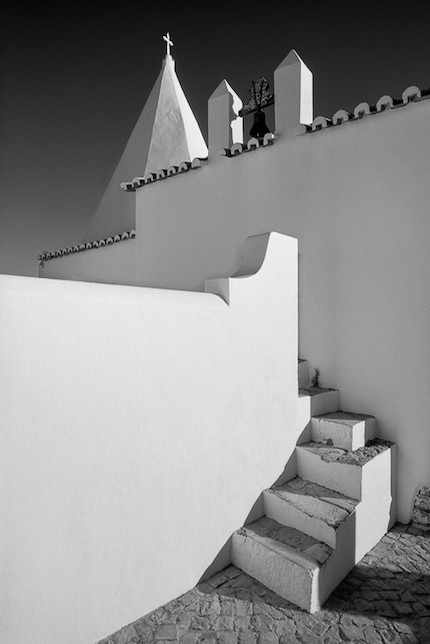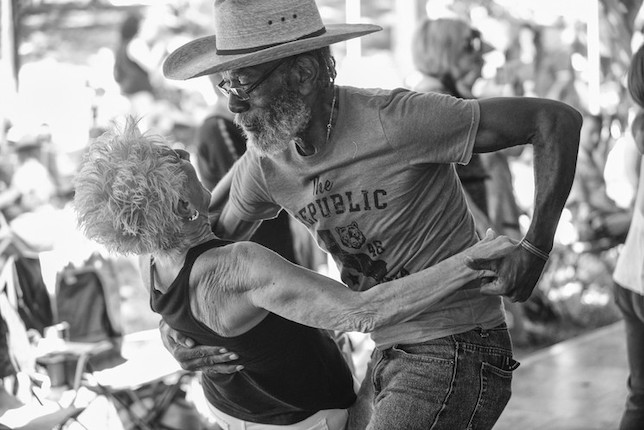
Why Artists Choose Black and White Photography
For many years, black and white photography was the default. Following the advent of modern photographic film in the 1880s, photographers concentrated on mastering the “basics” of modern photography. It wasn’t until the 1930s that photographers began to tentatively explore color photography. In the 1960s, however, the world of photography became an explosion of color with the invention of instamatic cameras. Ever since, choosing black and white photography over color has been a very conscious choice.
You might be asking yourself, why would photographers choose black and white when color is so much more realistic, interesting and up to date ? In the eyes of many contemporary artists, this is not at all the case. Join Artsper to explore the mysterious allure of black and white photography.

There’s another world to discover in the monochrome…
To state the obvious, we live in a world of color. It’s what we’re used to. By choosing black and white, artists consciously seek to transport us to another realm, a different kind of world. For some, this represents an intriguing step towards the surreal, the opportunity to take a step away from reality and to consider the artistic subject in unexpected and exciting ways. This is especially true given that eye-catching images in black and white can look uninteresting in color, and vice versa. For many photographers, black and white therefore offers the chance to transform mundane, often lackluster subjects, into things of absolute beauty.

Take photography back to the basics
Color is often the most striking, attention grabbing feature of many photographs. When you remove this, the focus of the image has to shift to other compositional elements. Photographers and viewers alike are therefore forced to think about tone, texture and light in new ways. The depth of the image thus acquires a further importance. This is created by light contrasts, not color, and allows us to appreciate the craft in the texture and luminosity of the image even more. It is for this reason that many artists train in black and white photography, even if their portfolio is exclusively in color. Learning the skills behind monochrome photography can lend their color photos more depth and generally improve their practice.

Why not remove unnecessary distractions?
Clearly the importance of tone, texture, light and depth is not to be underestimated. They can be fundamental in showing what a photo is really about. For example, if you want to emphasise the wrinkles in someone’s face, color can take away from the contrasts which would otherwise be striking. By not using color, photographers are therefore able to strip back visual noise and focus on the true subject of their work. As Susan Sonntag said, “a beautiful photograph is not just a picture of a beautiful thing…”
Unsurprisingly, this minimalism then allows both the artist and the viewer to be more creative. The photographer is able to remove what the viewer is used to seeing, and, as a result, is able to draw their gaze across the photo in innovative or unconventional ways. For example, by drawing connections between shadows, textures and contrasts. For the viewer, this can involve a greater degree of ambiguity. Rather than viewing this as a limitation, however, it should be taken as an opportunity to be more creative in our interpretations. We can let our imaginations run wild and, consequently, create a stronger emotional connection to the photograph.

Go for the emotion…
For many artists, the appeal of shooting in black and white is, quite simply, that they feel it is more emotive. It doesn’t take an art critic to notice that black and white photos are often more dramatic than their color counterparts. Their dark tones and deep contrasts often instil an almost moody, or mysterious aura onto the work. This kind of theatricality is almost impossible to reproduce in color photography. Furthermore, neurobiologists have proven that something in black and white photography, be it the tonal ranges, rich blacks or luminosity appeals to us psychologically. In a way, we’re predisposed to liking black and white photography.

Tapping into tradition
Finally, black and white photography is part of a long tradition in contemporary art. For up and coming photographers like James Sparshatt, Samuel Cueto and Alain Longeaud, capturing their images in black and white offers them the chance to follow in the footsteps of the greats. In doing so, they are also able to add their works to this timeless tradition. In the world of photography, black and white images have always existed. This means that their works cannot instantly be dated. Furthermore, color schemes in clothing, logos and cars change over time. By removing the potential for this in their works, artists choose to give their pieces a classic quality, and to tap into a broader aesthetic tradition.

Black and white photography for the win?
It is clear that black and white is much more than an Instagram filter. It is a skill, a different way of seeing the world, another way of directing our attention. Although something about the vibrancy of color photography will probably always appeal to us, we should not discount black and white just because it has its origins in another era. Don’t you think something beautiful lies in its inherent mystery?

About Artsper
Founded in 2013, Artsper is an online marketplace for contemporary art. Partnering with 1,800 professional art galleries around the world, it makes discovering and acquiring art accessible to all.
Learn more













